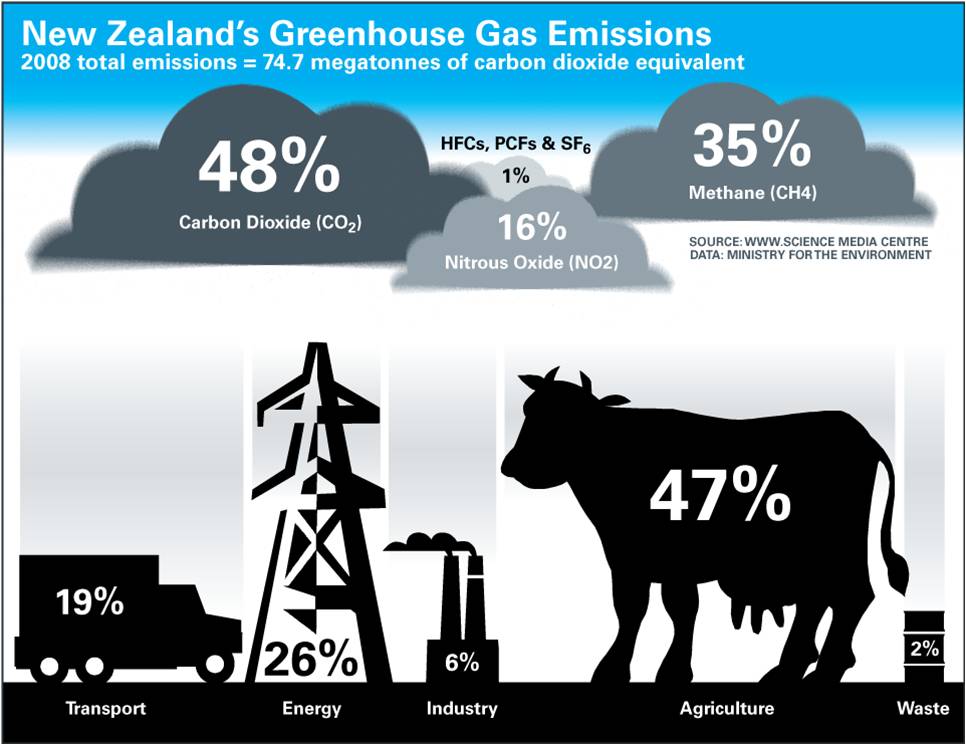The revised emissions trading scheme (ETS) passed into law last November comes into effect today, 1 July.
The scheme represents a first attempt to price carbon dioxide and other greenhouse gas emissions into the economy, in a bid to reduce emissions growth.
New Zealand emissions have grown by over 20% above 1990 levels, which are the reference point for our Kyoto Protocol obligations. A breakdown of the most recent greenhouse gas inventory figures are shown above.
Note: The graphic above is available for media use. Please contact the SMC for a high-res version.
Science Media Centre expert comments on ETS:
“The Government’s amendment bill does way too little to bring down New Zealand’s emissions. The bill has good aspects (e.g. agriculture is included, eventually) but its overall weakness and lack of clarity about its impact on emissions will undermine New Zealand’s reputation.” – Ass. Prof. Ralph Chapman
Read more: New Zealand ETS passed – experts respond
“There are signs of a tentative beginning in investment in carbon forests in New Zealand; forests that would not be there without the Emissions Trading Scheme (ETS). These forests will help to reduce New Zealand’s net greenhouse gas emissions in future.” – Ass. Prof. Euan Mason
Read more: ETS will encourage New Zealand forestry
“New Zealand on its own will of course not prevent dangerous global climate change. But there are also vital business reasons for cutting emissions. Our business sector is at risk of falling further behind other countries if we adopt a ‘slow follower’ stance, and investors don’t face the right price incentives to adapt to a lowcarbon world.” – Climate Change Research Institute, VUW
Read more: Scientists: Strong ETS is a necessity
“The challenges here go beyond the ETS alone. It is difficult to combine research with policy making, especially when the research is very much in the early phases. It is also difficult to get genuine constructive discussion between the private and public sectors.” – Dr Suzi Kerr
Read more: The science underpinning the ETS
